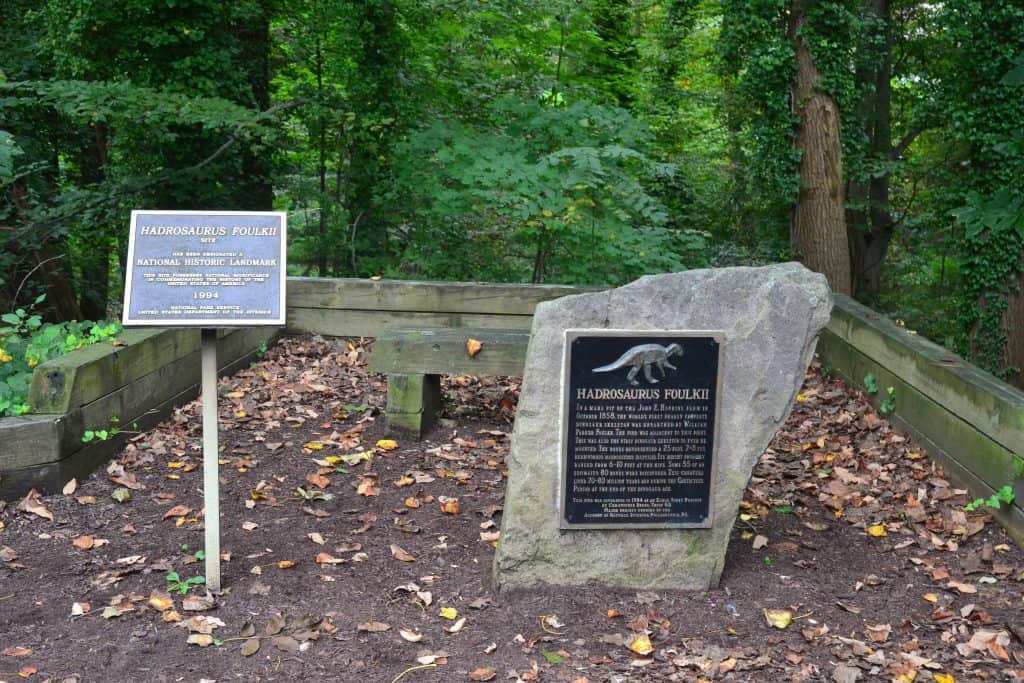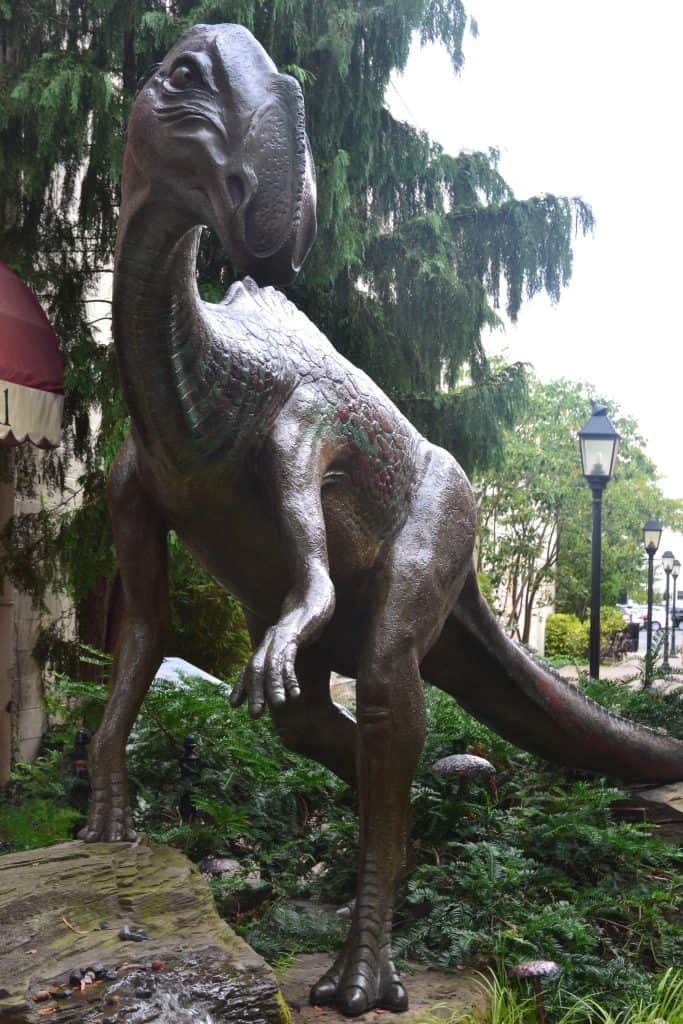

An ordinary plot of land in Haddonfield that yielded an extraordinary discovery is about to celebrate a milestone anniversary.
The site where the dinosaur Hadrosaurus foulkii was unearthed more than 150 years ago by amateur naturalist William Parker Foulke, had its name added to the National Register of Historic Places 25 years ago – officially on Oct. 12, 1994.
Described by the register thusly: “Maple Avenue (0.4 mile north of Hopkins Pond, on the north bank of the small stream flowing through Camden County Park land, but within the boundaries of the Borough of Haddonfield, into Cooper River) Haddonfield,” it sits at the tail end of the street, roughly 100 yards from a commemorative park developed 10 years earlier by Boy Scout Troop 65.
Per the Dinosaur Database, Hadrosaurus was a duck-billed herbivore, who lived during the Cretaceous period – some 70 million years ago – before meeting its demise. It measured up to 23 feet long with a mass of 2.5 tons. At present, 12 different specimens have been found by paleontologists.
According to the borough’s website, “Haddy” gained world-wide recognition because it was the most complete dinosaur skeleton unearthed anywhere in the world when it was discovered and scientifically documented in 1858.
Joseph Leidy, a professor at the University of Pennsylvania, and at the time also chairman of curators at the Academy of Natural Sciences, examined the bones both on the Haddonfield location as well as in his own laboratory. “Haddy” later held the honor of being the first mounted dinosaur skeleton displayed anywhere in the world, in 1868 at the Academy, per the Historical Society of Pennsylvania.
“For many years the site … went virtually unnoticed by the general public. That situation changed when an aspiring Eagle Scout, Christopher Brees, chose to lead his troop in developing a small park to recognize the importance of the site. Scouts had completed their project by the end of May, with dedication coming on Sept. 23, 1984,” read a passage from the National Historic Landmark Nomination file.
“The miniature park, 50 feet by 25 feet, has as its centerpiece a slab of Stockton Arkose on which is mounted an interpretive bronze plaque and a small scale replica of the famous dinosaur.”
Brees recalled that he found very little information on the subject when he was contemplating how to go about the project.
“With much help from my father, we began to plan a site that would commemorate the discovery. It would be a pleasant site to visit, explore and educate the public of all ages. Working with the Junior Women’s Club of the Haddon Fortnightly and Academy of Natural Sciences was a real thrill. At age 13, this was a great learning experience,” he said.

Brees credited his advisor, Dennis Powell, for being a constant source of help and great advice during the process, and added another name borough residents should remember for the undertaking to get the National Register involved.
“Everyone must thank John Bond, who worked for the National Park Service. After he retired, he took it upon himself to recommend the site and fill out a lot of paperwork to do so. I am very proud of the site and all the great people who helped to make it happen.”
Hadrosaurus foulkii became the official dinosaur of New Jersey in 1991 after years of hard work by teacher Joyce Berry and her fourth-grade classes at Strawbridge Elementary School in Haddon Township, but remains a point of pride within Haddonfield itself.
“Mention to any curator that you live in Haddonfield, and before you can complete the statement the likely response will be (“Haddy”). I’ve been asked by any number of parents of children fascinated by dinosaur history, ‘what is there to see in Haddonfield?’ I get a great kick out of seeing young children with their parents taking pictures with the sculpture,” added longtime Haddonfield resident and Borough Commissioner Bob Marshall, who lives a short distance from the site.
For more information about “Haddy,” visit: https://haddonfieldsculpture.org/haddy/. To view a comprehensive listing on the Hadrosaurus foulkii site at the National Archives, visit: https://catalog.archives.gov/id/135813644.


